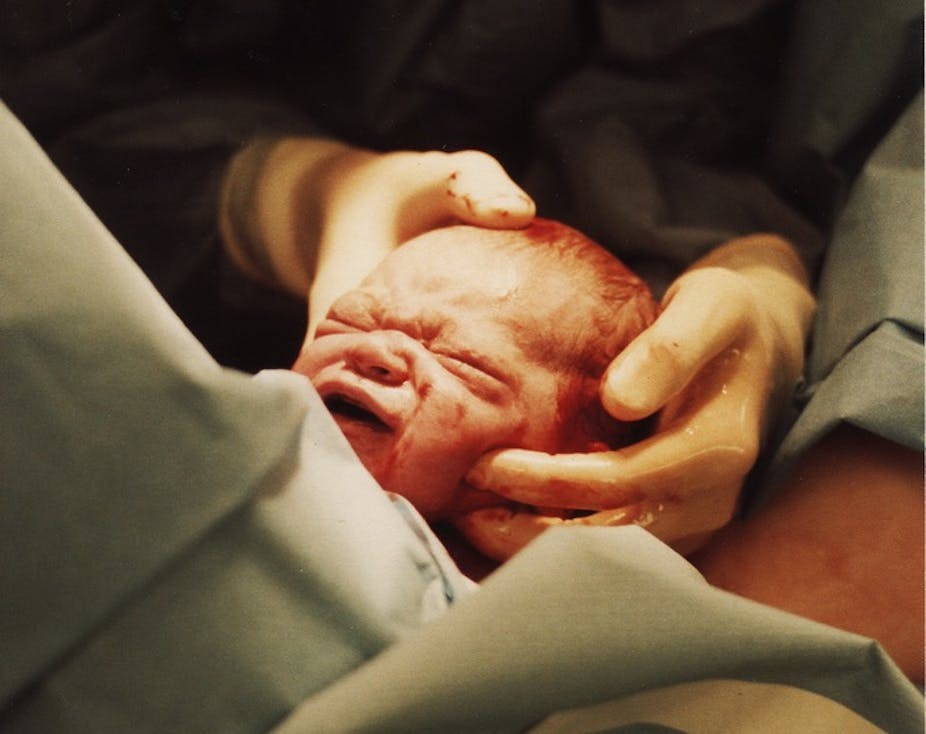For decades there has been a struggle between those arguing for women’s wishes to come first when it comes to childbirth and those who believe that a healthy baby is the only important consideration - however the birth happens.
Current financial pressures in the NHS have added an economic dimension to this debate, over how to deliver choice and safety as cheaply as possible.
Everybody wants a healthy baby. But also for women’s views to be respected and acknowledged. Elizabeth Prochaska, a human rights lawyer who last year founded Birthrights, an organisation that promotes women’s human right in pregnancy in childbirth, said it was “very common to hear of women being bullied, emotionally blackmailed or pressured” into decisions while giving birth. She attributes a rise of post-traumatic stress disorder and post-natal depression to women’s treatment during birth.
Know your rights
Tensions previously came to the fore in the 1950s and 1960s when a rise in the birth rate coincided with overstretched maternity services.
In April 1960, Sally Willington published a letter in The Observer about her distressing ten-week stay in St Albans hospital two years earlier after she bleed while pregnant. Willington “lay there miserably waiting and observing what went on.”
In her letter, she invited readers to write to her if they thought something should be done. Letters and donations flooded in from all parts of the country from women who had had similar experiences. This inspired Willington to found a radical, voluntary organisation - the Society for the Prevention of Cruelty to Pregnant Women - which became the Association for Improvements in the Maternity Services (Aims) in 1960. A basic piece of advice given out to women by Aims was to “know your rights”.
We are now experiencing another boom in the birthrate, and still trying to reconcile the need for choice and safety for mothers and babies with stretched NHS resources.
Patronising women doesn’t help
Some clinicians have argued that women should temper their expectations of birth and that a healthy baby, rather than women’s satisfaction, should be the criteria for a successful birth. Obstetrician Dr Gedis Grudzinskas said in a recent article:
The fact is, because of budget issues, there’s much less flexibility and likelihood of a happy outcome to an agreed birth plan.
Grudzinskas continued with an assertion of professional, medical expertise over women’s knowledge and wishes. “The advice that professionals give is based on many years of experience,” he said. “In the old days, women referred to doctors as experts. Now, many women think they’re well-read because they’ve done research on the internet.”
Similar arguments were being made in the 1960s, when the obstetrician John Stallworthy said that a “patient has the right to express her choice, but it may be unwise or impossible to implement it.”
However, history shows that traumatic birth experiences do matter, even if babies are born safely. My research into the experiences of women who gave birth between the 1940s and 1990s revealed that poor relationships with doctors, midwives and nurses defined women’s recollections of their births and their satisfaction with their care.
In my interviews with mothers they often told me that they felt they received excellent medical care, but criticised the attitudes of hospital staff. Medical professionals were perceived as being self-important, believing that they knew better.
These mothers felt that their emotional needs were not met, and that they were inadequately informed about the procedures being carried out.
But women who had more durable relationships with their birth attendants felt there was good communication between them also felt better equipped to deal with motherhood. This resulted in improved outcomes for them and their babies. In the 1970s the Domino (Domiciliary In and Out) system at the John Radcliffe Hospital in Oxford meant women received their antenatal and postnatal care from the same team of community midwives who would then also deliver them within a GP’s unit.
The continuity of this care created a better bond between women and staff.
But despite more than 50 years of campaigning for improvements in the maternity services it is striking that an organisation like Birthrights is again focusing on the need to respect women’s rights during birth.
In the current climate of maternity unit closures and failed government promises about choice in place of birth and continuity of care, it is likely that the need for such calls will intensify.
A recently published report by the National Federation of Women’s Institutes and the National Childbirth Trust researched the experiences of 5,500 women and concluded that a choice of place of birth remained “an aspiration, not a reality” for women. Antenatal care and postnatal support was also fragmented.
Those responsible for maternity policy are yet to realise that investing in maternity services and directing resources towards more personal care will be both cost and health effective in the longer run.
Empowering women, maintaining safety and pursuing cost effectiveness need not be seen in constant opposition.

